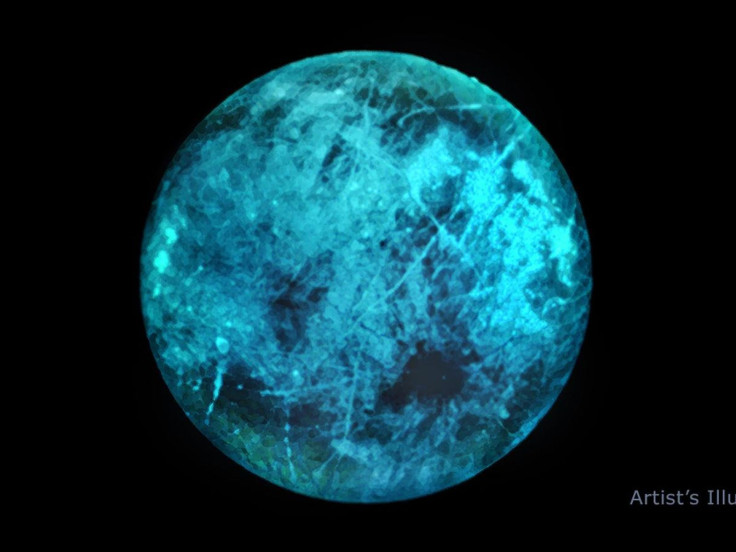Jupiter's Europa Moon Has A Mysterious Pulsating Glow: Scientists Now May Have Found The Secret
KEY POINTS
- Europa glows continuously even on its nightside or the portion away from the sun
- The glow results from a mix of energetic electrons and salts
- Scientists believe the findings would help future studies to determine if Europa could harbor life
While we may be familiar with our moon glowing in the night sky, the manner in which Jupiter's Europa pulsates in the dark has made it a scientific mystery. A new study based on a mock-up model tries to uncover the secret behind the radiating glow.
Previous studies have suggested that Europa's surface could be a combination of ice and some commonly known salts on Earth, including Epsom salt and table salt. The new research, published Monday in Nature Astronomy, showed that when these salts combine with the water ice found on Europa's surface, they emit light, giving the moon its glow-in-the-dark quality.
By comparison, the Earth's moon glows because it reflects sunlight. Europa, which is one of Jupiter's 53 named moons, glows because of a combination of compounds. It glows continuously even on its nightside, which is the portion away from the sun.

Europa's glow results from energetic electrons penetrating its surface, the team from NASA's Jet Propulsion Laboratory who performed the study explained. The electrons energize the molecules underneath so when they relax, they release that energy as visible light.
To the naked eye, the light would appear blue, green and sometimes white due to its varying degrees of brightness.
The new findings will be significant for future studies aiming to understand if Europa could host life.
"We were able to predict that this nightside ice glow could provide additional information on Europa's surface composition. How that composition varies could give us clues about whether Europa harbors conditions suitable for life," Murthy Gudipati, JPL scientist and lead author of the study, said in a press release.
The scientists haven't yet observed the actual glow from Europa. The study was based on a laboratory mock-up using an instrument called the Ice Chamber for Europa’s High-Energy Electron and Radiation Environment Testing or ICE-HEART.
If they are lucky, they may be able to see Europa's glow first-hand after NASA's flagship mission, the Europa Clipper. The mission is expected to launch in 2024 and aims to observe Europa's surface in multiple flybys while orbiting Jupiter. During the interplanetary mission, a spacecraft will conduct 45 flybys at a closest-approach distance of about 1,700 miles to 16 miles above Europa's surface.
© Copyright IBTimes 2024. All rights reserved.





















